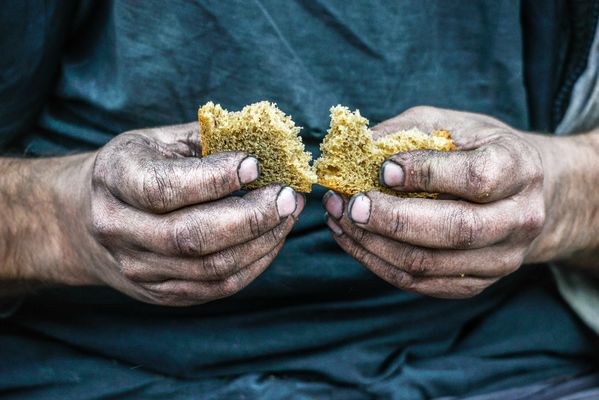5.2.2
Changes in Places
Reasons for Changes in Places
Reasons for Changes in Places
The structure of places can change for a wide range of reasons:


Planning restrictions
Planning restrictions
- Planning restrictions and local councils can either enable or prevent changes.
- Many places in London need to 'keep a view of St Pauls' Cathedral' and this stops a lot of developments being built.
- Allowing building on greenbelt or brownbelt land could change the makeup of places.


Clone high streets
Clone high streets
- Clone high streets describe high streets that could be the same anywhere across the country. They often contain similar chain stores like Greggs, River Island and Nando's.
- Lots of towns have clone high streets, but some areas try to revert to more historical shopping trends with boutique or artisan stores. This is noticeable in areas of London like Notting Hill.


Transportation
Transportation
- Access to a region can be increased by a range of infrastructure projects.
- A new motorway junction, railway station or regional airport can open up new areas. These places may become more attractive to workers or commuters, or may facilitate a new Amazon fulfilment centre.


Transportation examples
Transportation examples
- In London, the Elizabeth line connects East and West London more efficiently, whilst Battersea, which doesn't have a tube stop, is having one built on the Northern Line at Battersea Power Station.
- The development of the HS2 railway line could better connect London to the North of England.


Digital revolution
Digital revolution
- The internet, broadband and mobile phone data are all improving people's connectedness and their ability to do things remotely.
- More contractors may work remotely, meaning that offices can be smaller and people may work from home.


Digital revolution cont.
Digital revolution cont.
- Internet shopping and online banking have had a large impact on the high street. Lots of banks like Lloyds are closing physical bank branches because so many people use online banking.
- Software development companies are in a footloose, which could locate anywhere. Many companies like to set up in old redundant farm buildings or disused warehouses. Some old industrial buildings are used in the likes of Old Street or by office companies like WeWork.
Measuring Changes in Places
Measuring Changes in Places
Geographers measure changes within places using the following methods:


Land-use changes
Land-use changes
- You can carry out land-use mapping (fieldwork) and compare this with old maps from different time periods.


Employment trends
Employment trends
- The ONS (Office of National Statistics) provides data on employment trends over time.
,h_400,q_80,w_640.jpg)
,h_400,q_80,w_640.jpg)
Demographic changes
Demographic changes
- The ONS (Office of National Statistics) provides data on demographic trends over time.
- You could also use the National Census to try to get this information.


Levels of deprivation
Levels of deprivation
- Using indices that measure the level of deprivation (like the IMD) is a way of measuring the changes and trends in places.
1Tectonic Processes & Hazards
1.1Tectonic Processes & Hazards
1.2Natural Disasters
1.3Natural Disaster Case Studies
1.4Trends & Patterns
2Option 2A: Glaciated Landscapes & Change
2.1Glaciated Landscapes Over Time
2.2Periglacial Landscapes
2.3Glacial Processes
2.4Glacial Landforms
3Option 2B: Coastal Landscapes & Change
3.1Coastal Landscapes
3.2Coastal Erosion & Deposition
3.3Coastal Risks
4Globalisation
4.1Globalisation
4.2Negatives of Globalisation
4.3Global Shift
4.5Culture
4.6Measuring Development
5Option 4A: Regenerating Places
5.1Types of Economies
5.2Function of Places
5.3Regeneration
5.4Regeneration Case Studies
6Option 4B: Diverse Places
6.1Population Structure
6.2Past & Present Connections
6.3Urban & Rural Spaces
6.4Diversity
6.5Urban & Rural Case Studies
6.6Case Study - Tower Hamlets
6.7Case Study - Sturton-le-Steeple
7The Water Cycle & Water Insecurity (A2 only)
7.1Hydrological Processes Global to Local
7.2Influences on the Water Cycle
7.3Water Insecurity
8The Carbon Cycle & Energy Security (A2 only)
8.1The Carbon Cycle
8.2Energy Consumption
8.3Alternative Energy
8.4Growing Demand for Resources
9Superpowers (A2 only)
9.1Superpowers
9.2Hard & Soft Power
9.2.1Hard & Soft Power
9.2.2Emerging Powers - China Rivalry
9.2.3Emerging Powers - Chinese Sources of Power
9.2.4Emerging Powers - Brazil
9.2.5Emerging Powers - Russia
9.2.6Emerging Powers - India
9.2.7Theories of Development
9.2.8Power Case Studies: Chinese One Belt One Road
9.2.9Power Case Studies: Pakistan Nuclear Arms
9.2.10Power Case Studies: OPEC
9.3IGOs, TNCs & Alliances
10Option 8A: Health & Human Rights (A2 only)
10.1Human Development
10.2Role of Governments & IGOs
10.3Human Rights
10.4Interventions
11Option 8B: Migration & Identity (A2 only)
11.1Globalisation & Migration
11.2Consequences of Migration
11.3Nation States
11.4Responses to Global Migration
Jump to other topics
1Tectonic Processes & Hazards
1.1Tectonic Processes & Hazards
1.2Natural Disasters
1.3Natural Disaster Case Studies
1.4Trends & Patterns
2Option 2A: Glaciated Landscapes & Change
2.1Glaciated Landscapes Over Time
2.2Periglacial Landscapes
2.3Glacial Processes
2.4Glacial Landforms
3Option 2B: Coastal Landscapes & Change
3.1Coastal Landscapes
3.2Coastal Erosion & Deposition
3.3Coastal Risks
4Globalisation
4.1Globalisation
4.2Negatives of Globalisation
4.3Global Shift
4.5Culture
4.6Measuring Development
5Option 4A: Regenerating Places
5.1Types of Economies
5.2Function of Places
5.3Regeneration
5.4Regeneration Case Studies
6Option 4B: Diverse Places
6.1Population Structure
6.2Past & Present Connections
6.3Urban & Rural Spaces
6.4Diversity
6.5Urban & Rural Case Studies
6.6Case Study - Tower Hamlets
6.7Case Study - Sturton-le-Steeple
7The Water Cycle & Water Insecurity (A2 only)
7.1Hydrological Processes Global to Local
7.2Influences on the Water Cycle
7.3Water Insecurity
8The Carbon Cycle & Energy Security (A2 only)
8.1The Carbon Cycle
8.2Energy Consumption
8.3Alternative Energy
8.4Growing Demand for Resources
9Superpowers (A2 only)
9.1Superpowers
9.2Hard & Soft Power
9.2.1Hard & Soft Power
9.2.2Emerging Powers - China Rivalry
9.2.3Emerging Powers - Chinese Sources of Power
9.2.4Emerging Powers - Brazil
9.2.5Emerging Powers - Russia
9.2.6Emerging Powers - India
9.2.7Theories of Development
9.2.8Power Case Studies: Chinese One Belt One Road
9.2.9Power Case Studies: Pakistan Nuclear Arms
9.2.10Power Case Studies: OPEC
9.3IGOs, TNCs & Alliances
10Option 8A: Health & Human Rights (A2 only)
10.1Human Development
10.2Role of Governments & IGOs
10.3Human Rights
10.4Interventions
11Option 8B: Migration & Identity (A2 only)
11.1Globalisation & Migration
11.2Consequences of Migration
11.3Nation States
11.4Responses to Global Migration
Unlock your full potential with Seneca Premium
Unlimited access to 10,000+ open-ended exam questions
Mini-mock exams based on your study history
Unlock 800+ premium courses & e-books